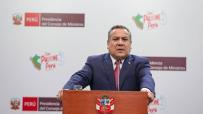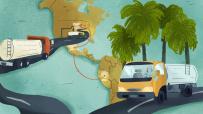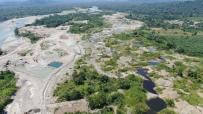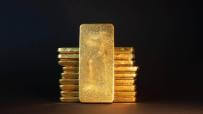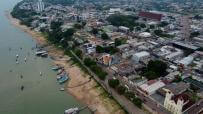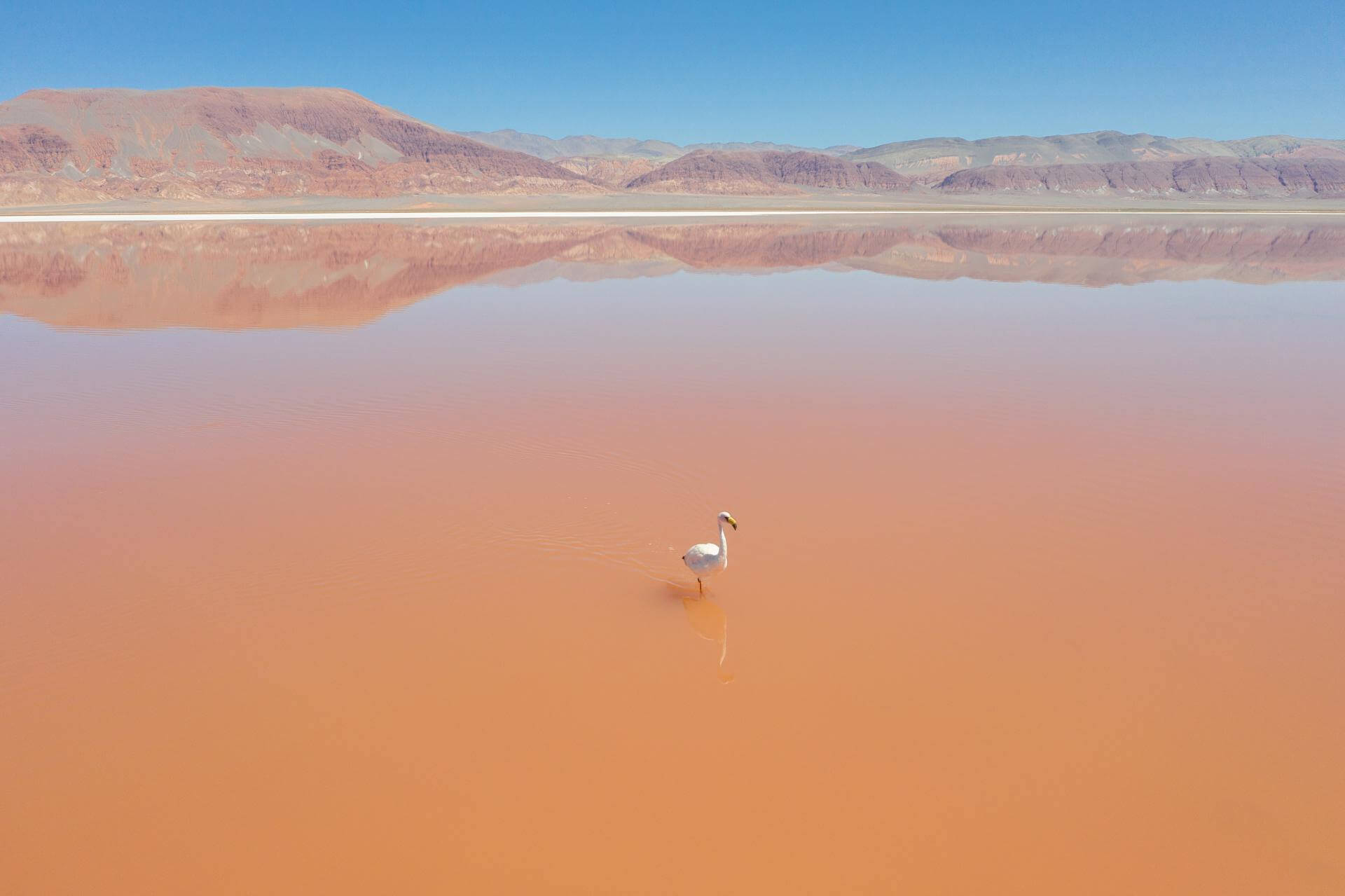
With the collaboration Gianfranco Huamán
Electric cars are a boom in European cities like Madrid, Paris, and Rome. Fashion engines no longer roar, as in the old days. They are silent vehicles, powered by lithium batteries and other minerals that have become strategic resources for the European Union. By promoting these vehicles, Europe seeks to reduce its dependence on fossil fuels and carbon emissions.
However, the transition to what is considered a less polluting and sustainable energy model – driven by the signing of the European Green Deal– is not so much. During the last five years, in South America, lithium extraction almost tripled in the number of kilograms exported, according to OjoPúblico's export analysis.
The figure is much higher if compared to the amount of dollars that entered, mainly driven by the historical peak of the price of this mineral during 2022. Exports of lithium as raw material increased ten times in the last five years to reach USD 8,300 million last year.
The increased demand for lithium has a direct impact on the management of natural resources in the places of extraction: In southern Latin America, social conflicts linked to the extraction of this mineral have increased, since in several cases it is found on fragile ecosystems or in areas inhabited by indigenous peoples.
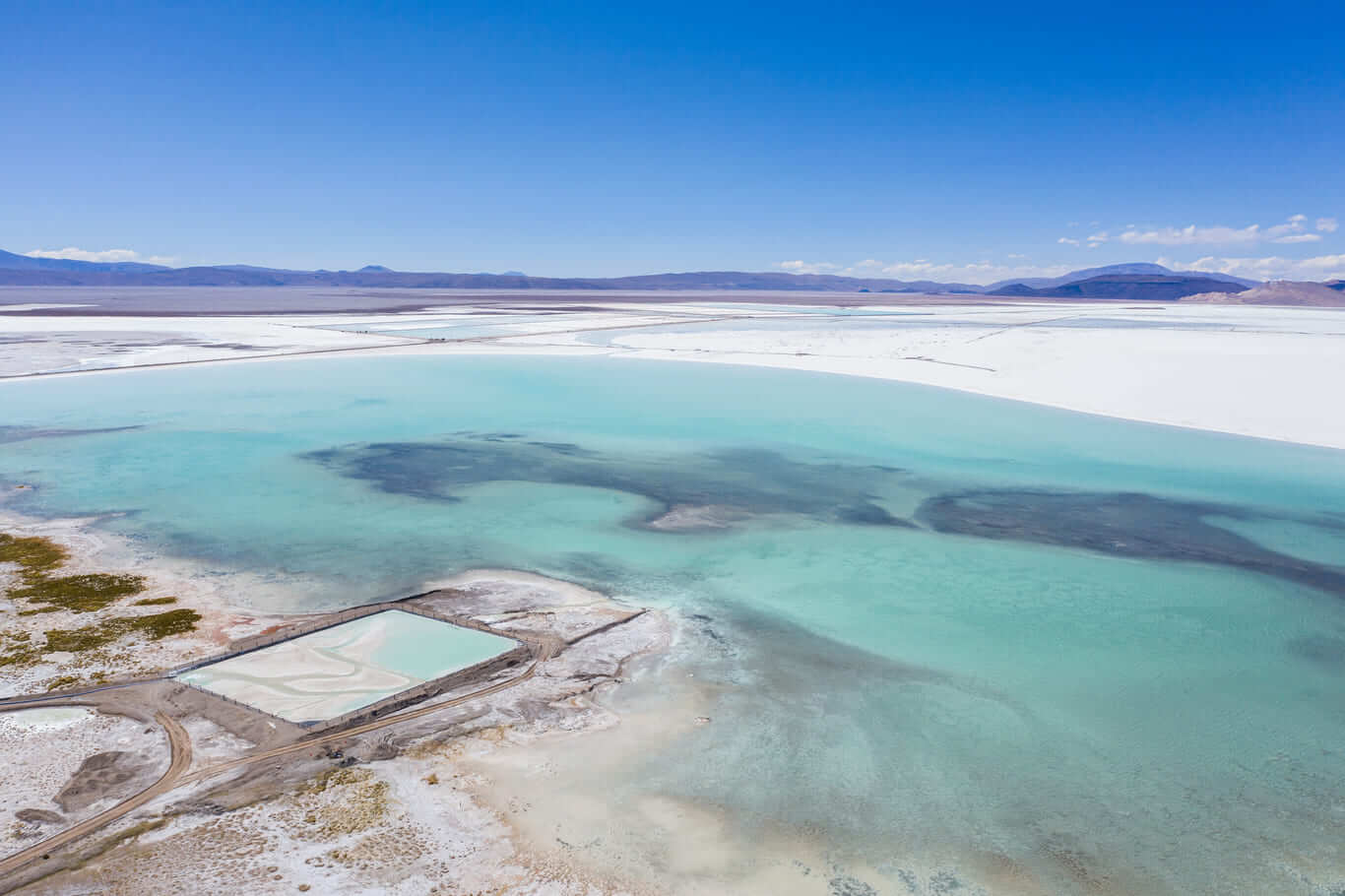
PANORAMA. The striking water pylons are just one part of the lithium exploitation process.
Photo: Sebastian López
“It is inevitable that sales of electric cars in Europe will increase lithium extraction in South America. The European Union has a great responsibility because lithium has become a priority. It is obvious that we need an energy transition, but it must be fair. We will not be able to address the climate emergency if we deepen the differences and put our territory above another. If not, it is always the same who pay,” Idoia Villanueva Ruiz, member of the European Parliament, tells OjoPúblico.
The Spanish MEP remarked in the interview that the control of extractive companies will be key to avoid excesses, as "has historically happened with European multinationals in Latin America".
A profitable business
In recent years, the market in South America has focused on the so-called lithium triangle, a region that includes northern Chile and Argentina, and Bolivia, countries that accumulate 65% of the reserves of this mineral worldwide.
These three countries exported 231,000 tons of lithium last year, but the figure is far from the estimated potential for reserves below their wetlands. Although development in the region is still incipient, Chile is already positioned as the second mineral exporter in the world (behind Australia) and Argentina as the fourth.
This same group of countries concentrates the production of lithium in South America, and it is estimated that there are additional reserves of fifty million metric tons. The latter also includes Peru, where there are projects still in the exploratory phase.
Chile leads by a wide margin all lithium exports in South America. Its 2022 production was the highest in the region, since in that period alone the exports amounted to more than USD 7,500 million. Far behind is Argentina, receiving USD 715 million in foreign currencies, and Bolivia, which received around USD 37 million.
The demand for electric cars carries the price of lithium worldwide, which will directly impact the South American economies in the coming years. China, the world’s leading battery-powered car market, is a key player in the entire ore chain.
The price of lithium increased by almost 500% in 2021 driven by automotive sales; the figure rose again in 2022 to exceed $ 80,000 per ton. But the Chinese government’s announcement of the withdrawal of aid for electric car buyers burst the bubble: Between December 2022 and February 2023, the price of lithium fell almost 30%.
However, despite the fall in prices, lithium is still considered a great opportunity for South American businessmen and politicians. Lithium could become the region’s main export by 2040, accounting for about 80% of South America’s total foreign sales, according to a study by the Latin American Strategic Center for Geopolitics.
Argentina appears several steps below Chile. It has only two projects in operation, but its authorities announced eighteen new private investments to extract the resource in the north of the country.
Peru has also identified lithium reserves, but unlike the other countries, lithium occurs in rocks in these areas, so drilling is required. A report from the United States Geological Survey (USGS), estimates that the country has 880 thousand tons of lithium.
Currently, there are two lithium projects in the hands of the Canadian mining company Macusani Yellowcake, but they are in a fairly early stage. This company is a subsidiary of American Lithium Corp.
Just this month, the company was authorized by the Ministry of Energy and Mines to start drilling works in the Falchani project, located in Puno.
In addition to these projects, the Geological, Mining and Metallurgical Institute (INGEMMET) has identified other extraction areas in Peru: Coasa and Santa Rosa, in Puno; and Carumas, in Moquegua.
Lithium Goes Away but the Impacts Remain
Electric cars have broken sales records in Europe in recent years, especially after authorities agreed that no more gasoline or diesel cars would be sold since 2035. The market will need more of this mineral to manufacture millions of batteries in the coming years and its price, quite fluctuating at present, tends to a sustained growth.
In this report by OjoPúblico, experts warn that the climate neutrality proposed by the European Union toward 2050 could be met at the expense of the impact on wetlands and other fragile ecosystems in Chile, Argentina, Bolivia, and Peru.
The images of huge stream pools of brightly colored water in arid places are only part of the picture of lithium mining, the extraction of which requires the use of a large volume of water. In the areas of exploitation of Bolivia, Chile, and Argentina, for example, flamingos, which used frequently observed, now rarely appear.
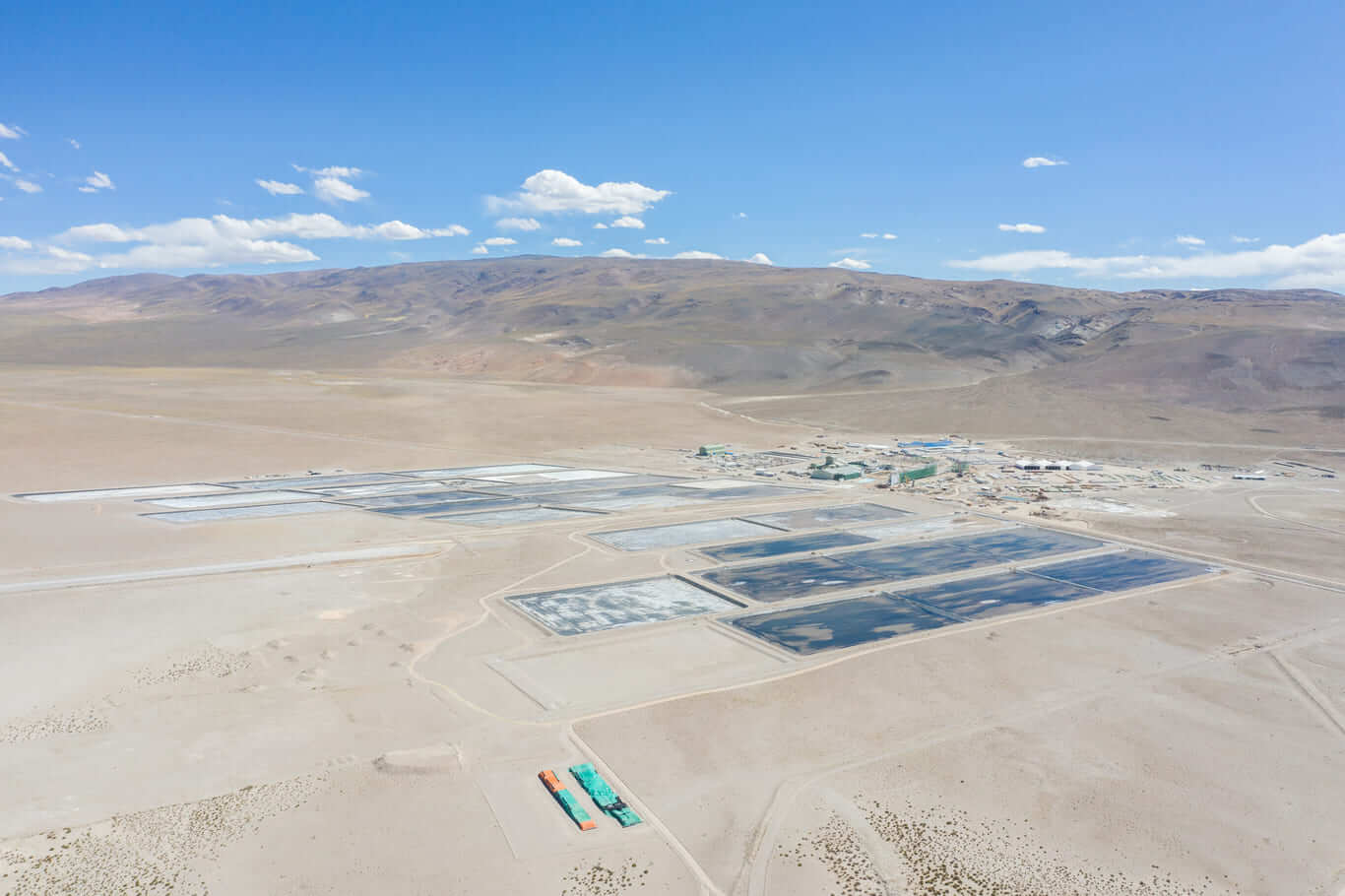
EXPLOITATION. Large amounts of water are needed to extract lithium, a mineral that usually accumulates in salt flats.
Photo: Sebastian López
Lithium accumulates mainly in salt flats, an ecosystem of arid wetlands that are in direct contact with a unique fauna and vegetation which sustain the local indigenous peoples.
Both people and animal species are usually impacted, precisely because of the lack of fresh water after the extraction. “Indigenous peoples are left without water; the vegetation disappears. Herbivorous animals must travel up to twenty kilometers to graze,” explains Román Baigún, biologist with the wetland care program of Wetlands International.
The Argentine expert is convinced that the current mining of lithium “is a tremendous cocktail” in South America.
“We favor the elimination of hydrocarbons to prevent climate change. For this purpose, it is necessary to accumulate the pulses of renewable energy from the sun, from the wind, from the tides. But it is not feasible to fill gigantic stream pools of water in Atacama, equivalent to 7,500 soccer fields all together. In an area as dry as this, removing billions of liters of water by evaporation, which do not return to the system, is unacceptable,” he insists.
The Atacama Desert is inhabited by flamingos and other bird species that feed on microscopic bacteria (cyanobacteria) that grow in the lakes of that region.
Three unique species of flamingos depend on the conservation of these conditions to survive, according to a study by The Royal Society of Great Britain. The wastewater from lithium mining is usually radioactive, making this space inhospitable for flamingos and other birds as expressed by the authors.
The same study notes that although lithium mining is not yet booming, the flamingo population has declined in recent years: Two species are already being affected by human activity in this wildlife refuge, according to this specialized publication.
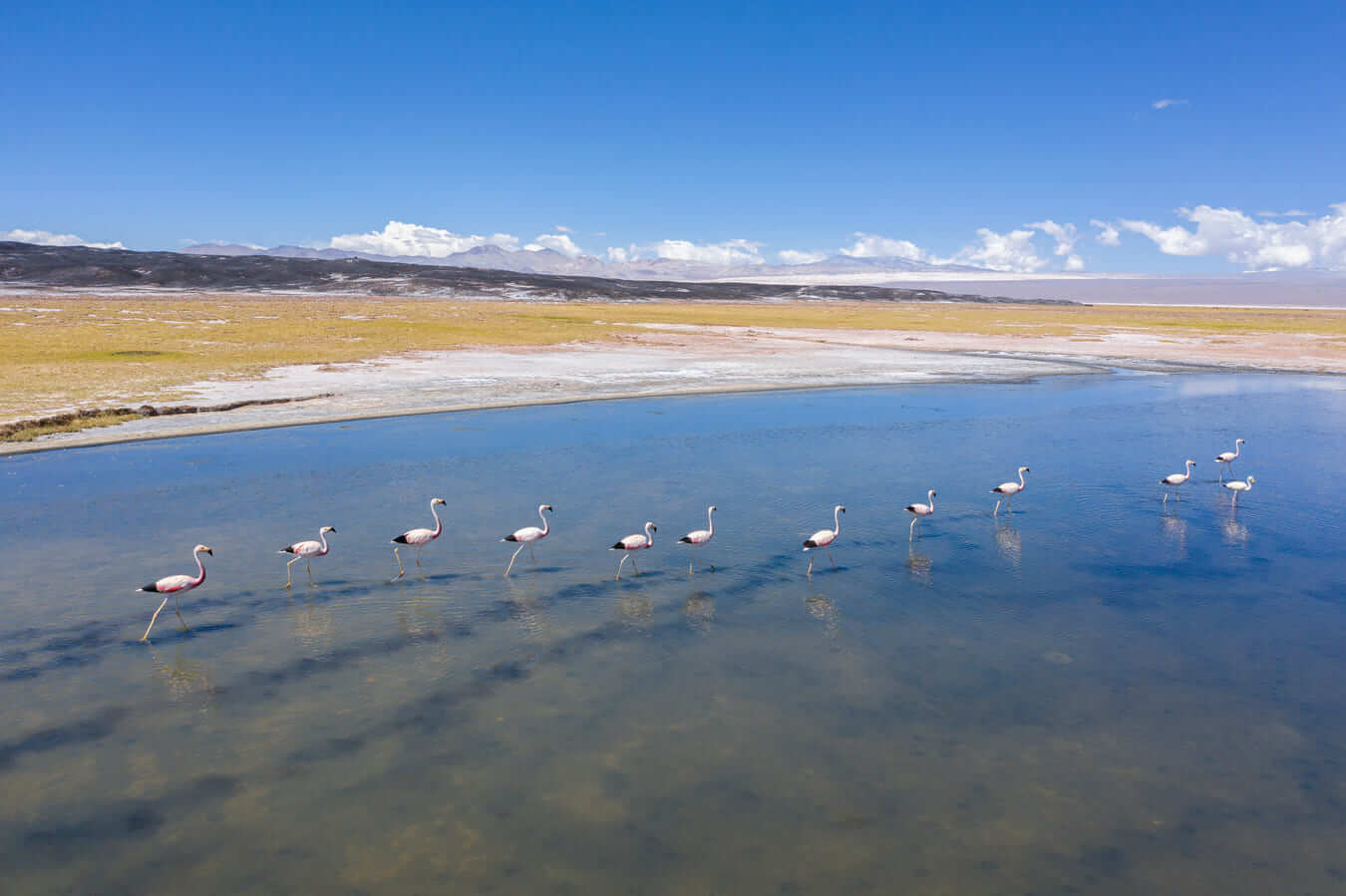
ABSENCE. Close to the lithium exploitation areas, sightings of flamingos are becoming less frequent.
Photo: Sebastian López
But beyond the environmental risks, the authorities of Chile, Argentina and Bolivia are more focused on participating in the profits left by lithium than on imposing controls to avoid the impacts produced by its extraction.
Bolivia nationalized lithium projects in 2008, and in Argentina, the state participates in a lithium as a minority shareholder, through the province of Jujuy which is the largest reservoir of this mineral and one of the poorest in the country.
The impact on the environment and lax controls in South America causes concern in Brussels, the seat of the European Union.
Sagrario Monedero Lopez, Director of Impact and Systemic Action at Greenpeace Spain, is convinced that “electric cars help in the ecological transition that Europe must make” but are not taking care of the social and environmental impacts that extraction can cause.
“We are in a European boom, in an unbridled race of companies that just want to seize the opportunity to make more money. Meanwhile, many companies are disregarding the environmental impacts of the indiscriminate use of water, the use of chemicals, social impacts, and the way they manage this issue is not transparency,” said the Spanish expert.
And she called on the European Commission to propose new rules of the game to help us understand better the conditions in which the mineral in the batteries of electric cars circulating in Europe has been extracted.
The discussion is already under discussion in the European parliament. Last month, the president of the European Commission, Ursula von der Leyen, agreed with the president of the United States, Joe Biden, to give favorable treatment to raw materials, such as lithium, considered strategic for Europe. They agreed to open a dialog on transparency about their respective green energy incentives, to ensure they join “forces,” something “fundamental to achieving the zero emissions target.”
China and the Geopolitical Dispute
The main destination of South American lithium is China and other Asian countries, responsible for the processing of this mineral into batteries to be shipped as manufactured products to Europe and the United States.
China bought 58% of South American lithium exports in 2022, according to the export analysis conducted by OjoPúblico. South Korea is another of the frequent destinations of these exports, since in the last five years it has bought 23% of the mineral coming from the region; and Japan accounted for another 10% of the exports in the same period.
“China’s role is key in the lithium market. Ninety-eight percent of the batteries purchased by the European Union have been processed in China. We depend on Latin America for its resources, but the region does not transform the mineral, and I think it should. It is important that they get together to negotiate on an equal footing, so that Latin America does not pay the price of Europe’s ecological transition,” says MEP Villanueva Ruiz.
Lithium has become a strategic resource for wealthier countries. To avoid a greater dependence on China, the European Union extended last December a bilateral agreement with Chile precisely to have privileged access to the lithium from that country.
“Chile is one of the largest lithium suppliers in the world, with almost 40% of the world’s supply. This is very important for electric mobility and for European environmental objectives, and it is clear that we need it for the Green Deal and for reducing dependencies, such as the one we have with Russian gas,” said Trade Commissioner Vadis Dombrovskis after the signing of the treaty.
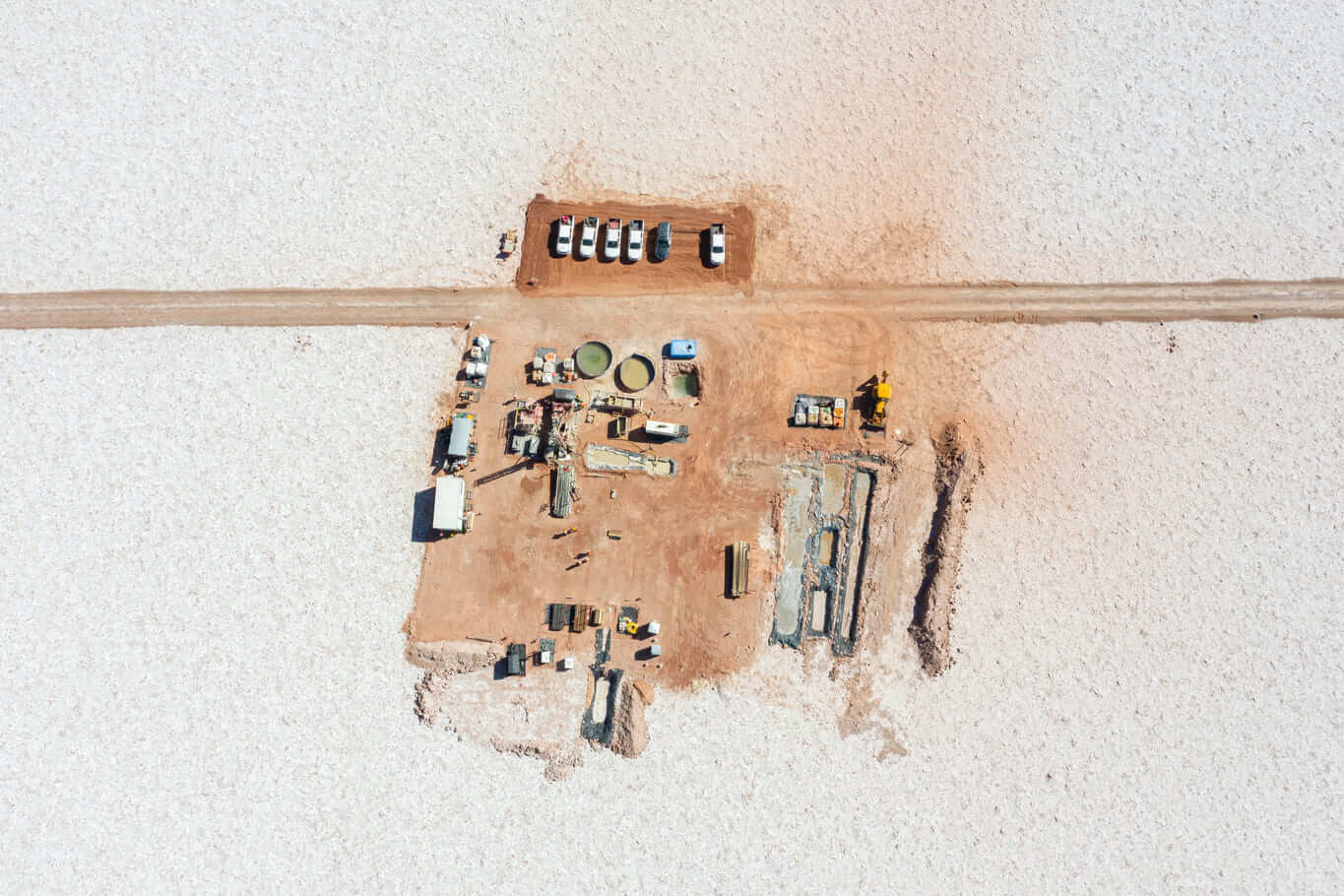
SALT. Lithium is a mineral that tends to accumulate in salt flats and deserts.
Photo: Sebastian López
Who are the companies that received the most profits in the so-called lithium triangle? Sociedad Química y Minera de Chile concentrate the largest number of exports: This company exported lithium carbonate for more than USD 6,500 only in 2022, according to the export analysis.
The company, whose main shareholder is the Chinese Tianqi Lithium Corp, operates its main lithium projects in Salar del Carmen and Salar de Atacama, in the Chilean region of Antofagasta.
Far behind appear Sociedad Chilena de Litio LTDA, with exports for USD 440 million in 2022, in partnership with the American company Rockwood Lithium to operate projects also in Salar de Atacama.
Orocobre Limited completes the podium of the companies that exported the most: It invoiced exports for USD 583 million last year operating the Olaroz project, in the Argentine province of Jujuy.
This company is an alliance between the Allkem (Australia) and the automaker Toyota (Japan), but with the characteristics that the regional government is also a minority shareholder of the mining enterprise through Jujuy Energia y Mineria Sociedad del Estado.
“The lithium market is dominated by China. The lithium that leaves South America goes there. They set the price and modify it when they want. When the European Union imposes the need to drive only with electric cars, lithium is going to soar again. We hope to be able to process the mineral in the region and, therefore, participate in the pricing process. The truth is that today there are minimal regulations,” said Pablo Rutigliano, president of the Latin American Chamber of Lithium.
Chile and Argentina, contributing with more than 30% of lithium globally, send their resources to China without processing them and, above all, without official questioning of the environmental damage that a large-scale early exploitation of South American wetlands could cause.
The treasure beneath the Salar de Atacama travels to Beijing and is now on the lips of member of the Parliament in Brussels. The European Green Deal, which its citizens take with pride in front of other high-emission powers such as the United States and China itself, may also be questioned, paradoxically, by the environmental cost it can generate on the other side of the world.
 Tienes reportajes guardados
Tienes reportajes guardados






